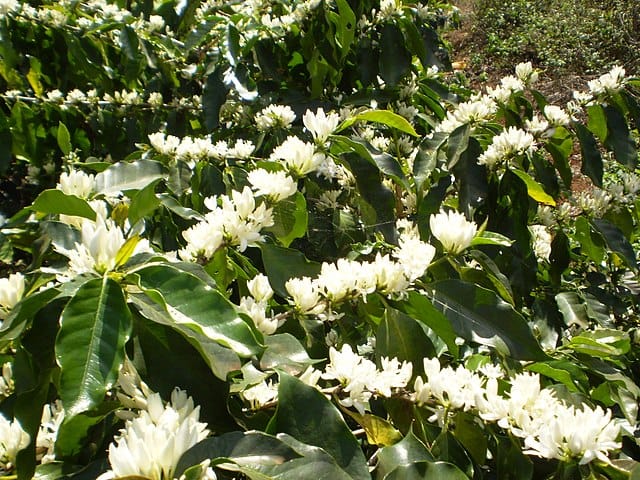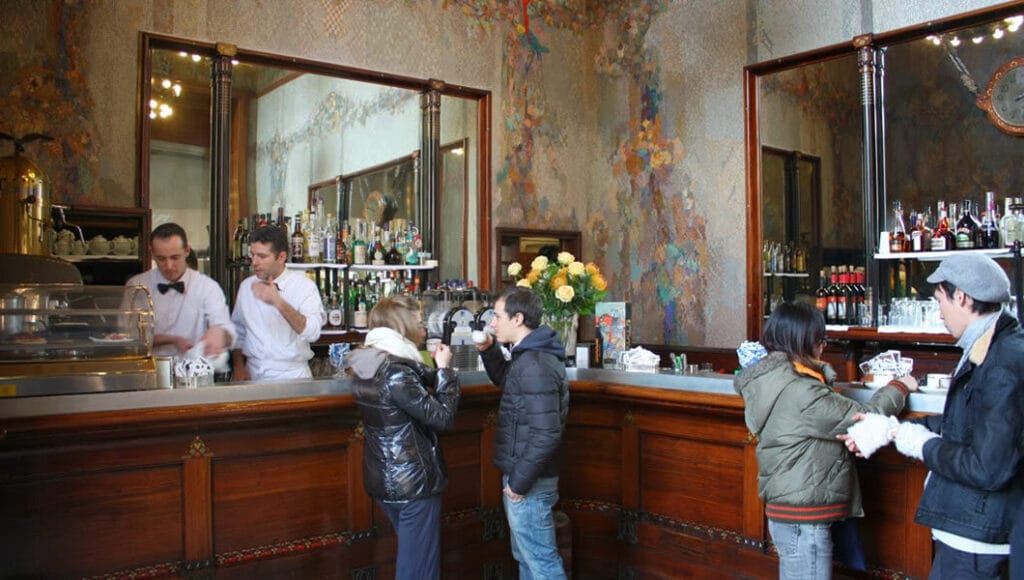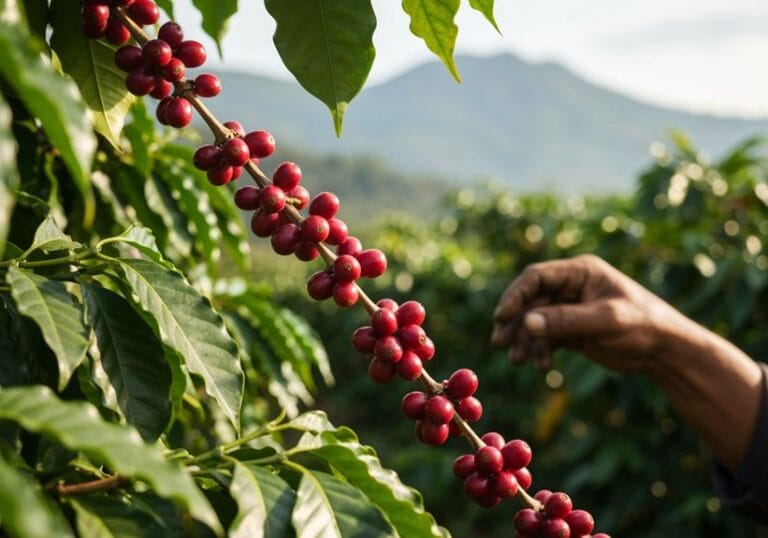Coffee, that magical brew we can’t live without, comes from Ethiopia, where it was initially cultivated by the Oromo people. Can you believe that? Fast forward to today, and it’s produced all over the world—like Brazil, which produces a whopping 66 million bags. Crazy, right? There’s also Vietnam with its strong Robusta and Colombia’s fancy Arabica! Each sip tells a story, so if you’re craving more wild facts, stick around—I promise there’s more fun stuff ahead!
Key Takeaways
- Coffee originated in Ethiopia, where the Arabica bean was first cultivated by the Oromo people.
- Ethiopia is recognized as the birthplace of coffee and has traditional coffee ceremonies.
- Major coffee-producing countries include Brazil, Vietnam, and Colombia, each specializing in different coffee types.
- Coffee grows best in the Coffee Belt, requiring specific climate conditions, elevation, and rainfall.
- The global coffee market is significant, generating revenues and providing jobs for many smallholder farmers.
Major Coffee Producing Countries and Regions
When people think about coffee, they might picture a cozy café or that glorious jolt of caffeine that gets them through the Monday blues. But do you know where coffee originated? Drumroll, please—it’s Ethiopia! This is where the beloved Arabica bean initially piqued humanity’s interest. Coffee has deep cultural significance among the Oromo people, who have been cultivating it for centuries and are known for their traditional coffee ceremonies that highlight coffee’s cultural importance.
Fast forward to today, and Brazil reigns supreme as the coffee king, producing about 66 million bags a year—talk about a caffeine empire! In fact, Brazil’s consistent output positions it as a major player in the global coffee market. Then there’s Vietnam, pumping out Robusta like it’s nobody’s business! They just love that strong, bold kick!
And let’s not forget Colombia, the suave Arabica specialist known for its fancy, floral flavors that make your taste buds dance. So, sip your brew and know these countries are the stars behind your daily fix!
Coffee Production by Continent
Though the world of coffee might seem like a cozy cup of joy, it’s actually a bustling global arena divided by continents, each with its own unique flavor and character.
Take the Americas, for instance—producing an impressive 100.5 million 60-kg bags in 2022/23! Brazil itself is coffee royalty, claiming 30.8% of the world’s total. Crazy, right?
The Americas produce a staggering 100.5 million bags, with Brazil dominating 30.8% of the global coffee market!
Then there’s Asia and Oceania, known for their high-quality Robusta coffee—Vietnam’s practically a superstar, even with some weather woes recently.
And Africa? They bring their own rich, earthy flavors, though they’ve faced production declines.
Coffee Growing Conditions and Varieties

Coffee growing conditions are like a delicate balance, where the plants need just the right climate, soil, and care to thrive—kinda like humans, but without the need for coffee breaks!
So, where is coffee from? Well, it flourishes in the Coffee Belt, where temperatures range just so. Arabica coffee loves that sweet 60°F to 70°F spot, while Robusta’s more of a heat lover, hanging out at 70°F to 80°F. Crazy, right?
Plus, altitude matters! Arabica prefers higher elevations for those complex flavors, while Robusta sticks to the lowlands. The ideal soil pH adjustment targets 6.0-6.8, ensuring the plants absorb necessary nutrients effectively.
And let’s not forget about rainfall—these plants are thirsty, needing 1,500 to 3,000 mm annually! Without these perfect conditions, coffee might as well be a sad, empty cup! Interestingly, volcanic soils can enhance flavor profiles by imparting unique notes to the beans.
Economic Impact of Coffee Production
Moving from the rich soil where coffee plants thrive to the bustling economic world they spark, it’s pretty wild to think about how much this little bean impacts lives.
Coffee originated from which continent, you ask? Africa! And now, it’s a powerhouse of job creation. Millions of smallholder farmers depend on these beans for their livelihoods, while countless others find work in processing and retail.
Picture villages bustling with activity, all thanks to coffee! Then there’s the economic punch it packs—like a double shot on a Monday morning—boosting national revenues and funding services.
But, oh boy, climate change throws a real wrench in the works. So, while sipping that cup of joe, just remember: you’re fueling economies and, occasionally, caffeine-induced laughs!
Global Coffee Consumption Trends

Surprisingly, coffee consumption is not just a morning ritual for many; it’s become a full-fledged lifestyle! With the global coffee market expected to balloon to USD 381.52 billion by 2034, it sure has perked up. Did you know that 66% of Americans drink coffee daily? Talk about a caffeine-fueled nation! Meanwhile, young folks are diving into coffee even earlier; Gen Z starts around age 15! Crazy, right?
| Year | Market Revenue (USD) |
|---|---|
| 2024 | $245.2 billion |
| 2025 | $473.10 billion |
| 2034 | $381.52 billion |
| 25-39 Age Group | 64% Specialty Drinkers |
| Health Awareness | 61% Positive Benefits |
Frequently Asked Questions
What Are the Most Popular Coffee Brands Worldwide?
The most popular coffee brands worldwide include Starbucks, Nescafé, McCafé, Keurig, and JDE Peet’s. These brands dominate the market through innovation, broad distribution, and appealing to shifting consumer preferences for quality and convenience.
How Is Coffee Processed After Harvesting?
After harvesting, coffee undergoes different processing methods, including washed, natural, wet hulled, and honey processes, each influencing flavor, acidity, and body. These methods encompass fermentation, drying, and hulling to prepare coffee beans for consumption.
What Are the Health Benefits of Drinking Coffee?
Numerous health benefits accompany coffee consumption, including reduced cardiovascular disease and cancer risks, improved metabolic and liver health, and neurological advantages. Moderate intake can improve general well-being, showcasing coffee as a potentially beneficial daily beverage.
How Does Climate Change Affect Coffee Production?
Climate change severely affects coffee production by shrinking suitable land, disrupting plant health, increasing disease prevalence, and altering yields. These changes threaten farmers’ livelihoods, leading to economic instability and rising coffee prices globally.
What Are Common Coffee Brewing Methods?
Common coffee brewing methods include drip brewing, immersion techniques like French press and cold brew, percolation, and manual pour-over. Each method influences flavor, body, and clarity, catering to diverse preferences and brewing styles.
References
- https://en.wikipedia.org/wiki/List_of_countries_by_coffee_production
- https://www.aboutcoffee.org/origins/coffee-regions-of-the-world/
- https://apps.fas.usda.gov/psdonline/circulars/coffee.pdf
- https://www.statista.com/statistics/263311/worldwide-production-of-coffee/
- https://qahwaworld.com/news/global-coffee-production-reaches-historic-high-in-2025-26-uganda-ethiopia-and-vietnam-lead-the-surge/
- https://icocoffee.org/documents/cy2023-24/Coffee_Report_and_Outlook_December_2023_ICO.pdf





